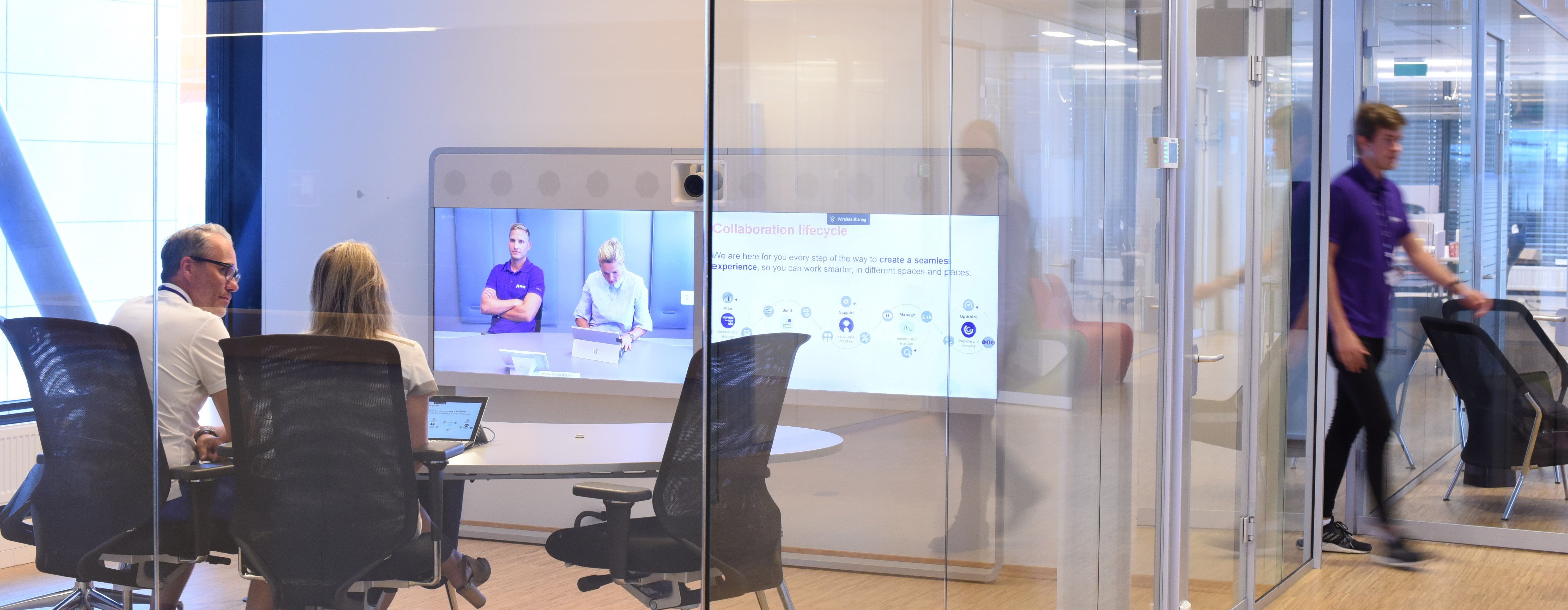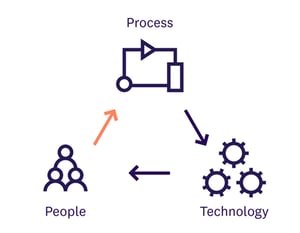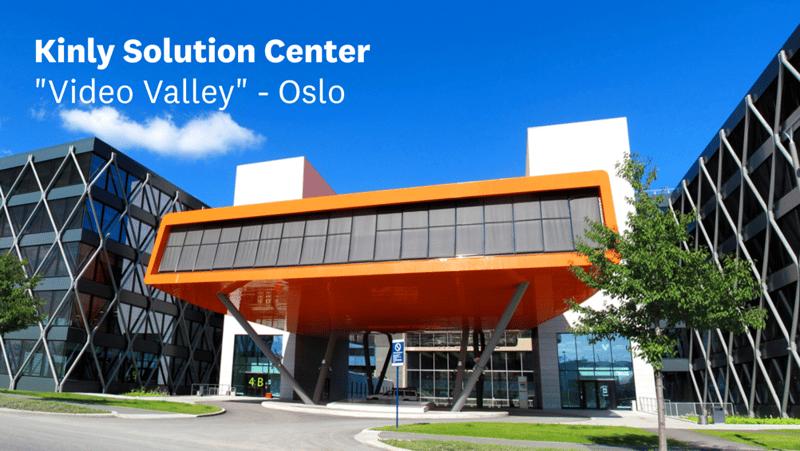
How to build the best video-based environment at work
As stated in my previous blogpost, two elements are needed for collaboration technology to enable digital transformation: Trust in people and trust in technology. To truly work together, people need to develop a solid relationship with each other. To utilize technology, people need to trust it.
Building this type of trust is increasingly difficult in our ever-growing, digital workplace. Therefore, organizations need to build the best environments for video-based communication to answer this need. In this blog, I will guide you through the process and provide you with insight into how it should be done.

The Tidal Wave of Technology
Navigating the ocean of video conferencing options for your company is necessary but challenging. According to the latest IDC InfoBrief survey, 70% of organizations are still not using any paid subscription-based, cloud-enabled, or immersive video conferencing solutions. The reason for this is twofold:
- Technological growth has been so swift that companies have failed to climatize and adopt behind it. It has left a gap. A lack of knowledge and adaptation of the available technology, which ultimately leads to mistrust and therefore, neglect.
- The sheer range of solutions, products and options mimic the informational society we live in; with so much choice, it is sometimes impossible to choose. If I pinpoint it:
"Our industry is incredible at throwing equipment out there and making models on how to sell it. Finding people who have been taught how to use it efficiently is less common."
A Leap of Faith
Despite all this, the IDC InfoBrief shows us that video conferencing is on the rise. Companies seem to understand its importance. In just two years, 60% of organizations plan to use video, and 45% say they will invest in the highest quality of immersive video conferencing. In six years, almost 40% of the workforce will consist of millennials, a generational wave that embraces the digital workplace.
The evidence shows that organizations acknowledge the need for a digital transformation. They have already climbed to the top of the precipice and working together with video can accelerate the transformation process. Still, many hesitate to jump because they cannot see where they will land.
Baby Steps
Yet, leap they must. People still need basic human interaction.
From birth, we interact with the world through all our senses.
While we do not advise tasting or smelling each other, the visual aspect and having a sense of physical presence is still a vital element in human interaction. In quality communication.
"We think holistically. We start with human interaction and how to support the workflow, then we discuss technology."
In other words, the physical and digital workspace must be in tune to create one, seamless experience. Kinly believes that to achieve this, understanding people and the tools they need is critical.
Mapping Your Workflow
So, how does your organization take that step? First, you need to analyze your demands and create a strategy for what to choose and how to use it. Unless you are an expert, involving your supplier in this step is vital. However, as mentioned above, many suppliers will provide the products and nothing more.
"With Kinly, it does not stop with technology. We will be there every step of the way."
Kinly helps you customize your activity-based workspaces and optimize the rooms for the type of workflow you need to support. Based on which activity you are planning for your workforce, Kinly shows you which solution supports that activity.
How it Works
Adopting video conferencing into your workplace is like most other acquisitions. Take the employment process, for example: When you need to hire a new employee, you have likely identified the problem beforehand. A gap that needs closing. You therefore have an idea of how they will perform their work, efficiently. Where they will be stationed. You choose the candidate most likely to fill these criteria and then enroll them in the training process.
The incorporation of video conferencing solutions in your workplace should be similar. First, you need to map who your workers are – how they communicate and relate to others. Then, identify which tasks need to be performed and which rooms, virtual or physical, are available to you.
If you need an example, consider how lawyers usually work with defined borders; offices and spaces shielded from unwanted listeners. It is deliberate customization of the workplace to secure communication, thereby liberating workflow of any impeding elements. Just so in video conferences.
Only after you and your supplier have completed these three steps (People, Assignments, Space), should you choose the appropriate solutions and services. The technology. Because now, the concept is the same as hiring a new employee. Only less risky.
You know what needs to be done, how it should be done, and where it can be done. Most importantly, you know who should do what. In other words, you can trust in people and trust in technology.
All that remains is transferring that same knowledge and trust to your employees through integration and training.
Up Next – Video of Video
Curious as to what a customized video conferencing room might look like? In my next blog post, through live video, I will show you some of the recommended spaces from our Kinly Solution Center in Oslo, and even make a few lightspeed visits to other centers located across the globe.








